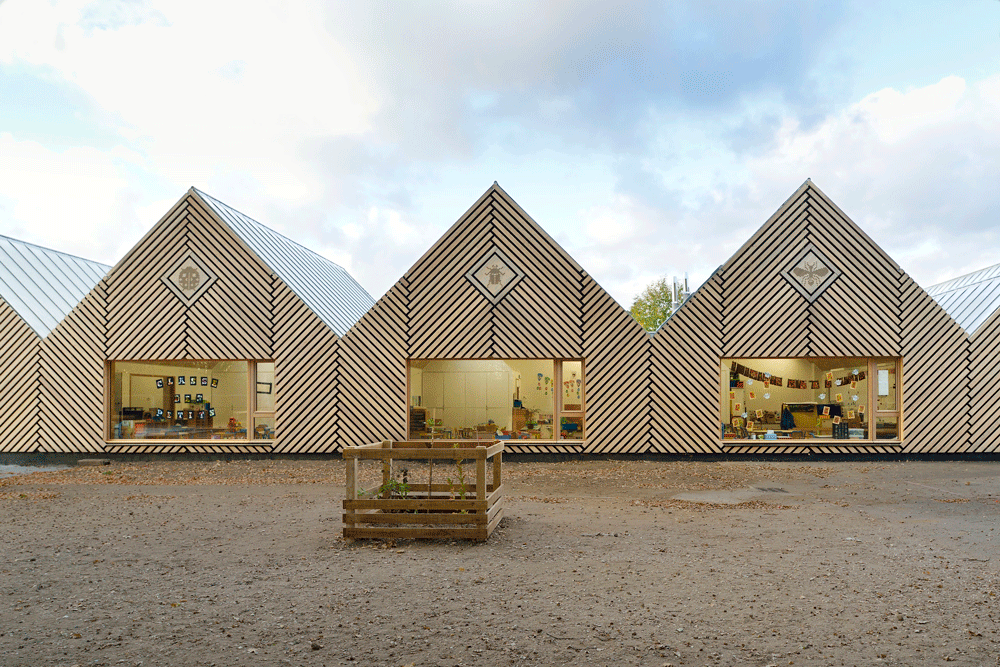Nîmes, France

Description and images are courtesy of Elizabeth de Portzamparc.
The inauguration of the Musée de la Romanité is the largest contemporary architectural and cultural event for 2018 in France. An important complex of Roman culture and an innovative museum, archeological garden and living environment, it opened for the public on June 2, 2018, with over 10,000 visitors during the first weekend.
Its exceptional archaeological collections contain over 25,000 pieces, of which some 5,000 are exhibited over 9,100 m. They take the viewer on a unique historical voyage through 25 centuries of history thanks to the immersive and interactive exhibition design.
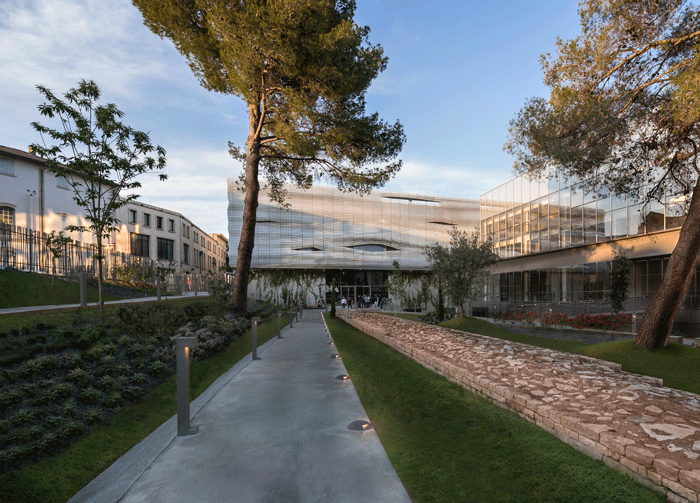
A Unique Site
The museum stands opposite the Roman amphitheater of Nîmes, at the edge of the Écusson district, the name of the historic heart of the city. Straddling the ruins of the Roman rampart, it is positioned atop the backbone of what was in the past the limit between the medieval and modern districts of the city. Twenty centuries of urban strata are superimposed here and as many bits and pieces of architecture. This is the exceptional heritage of the city of Nîmes

As if raised up in the midst of these witnesses of the past, the museum is imagined as the gateway to an urban promenade. Through a series of urban openings and the framing of perspectives, the treasures of Roman heritage and of the more recent buildings surrounding it are enhanced. The axes and links created between the streets and the adjacent public square offer greater openness and new pathways through the city.

“In my in-depth analysis of the Amphitheater, I thought a great deal about the very idea of a contemporary building and how to glorify the 21 centuries of architectural history that separate these two buildings. A very light architectural design, made possible by current technology, seemed an obvious choice to me, as well as the need to express the differences between the two periods through an honest dialog, based on the complementarity: on the one hand,
Elizabeth de Portzamparca round volume surrounded by vertical roman arches in stone and solidly anchored to the ground, on the other, a large and floating square volume clad in a toga of glass drapery.”

A Museum to the City
The building is organized around an interior street that follows the trace of the ancient Augustan rampart. Accessible to all, this public passageway creates a visual opening and links the plaza surrounding the Amphitheater with the archeological garden. As visitors and strollers cross through the museum’s entirely transparent ground floor, they are invited to discover the ancient treasures of the site. In the building’s core, a 17-meter high atrium reveals a fragment of the

This passageway also offers access to the museum’s bookstore, café
Michelin Guide for Le Parc in Carcassonne.

A number of openings in the façade offer different views of the Amphitheater and the archeological garden below. Throughout the exhibition spaces, an uninterrupted dialog is maintained between the museography and the exterior, causing the city to penetrate the museum.
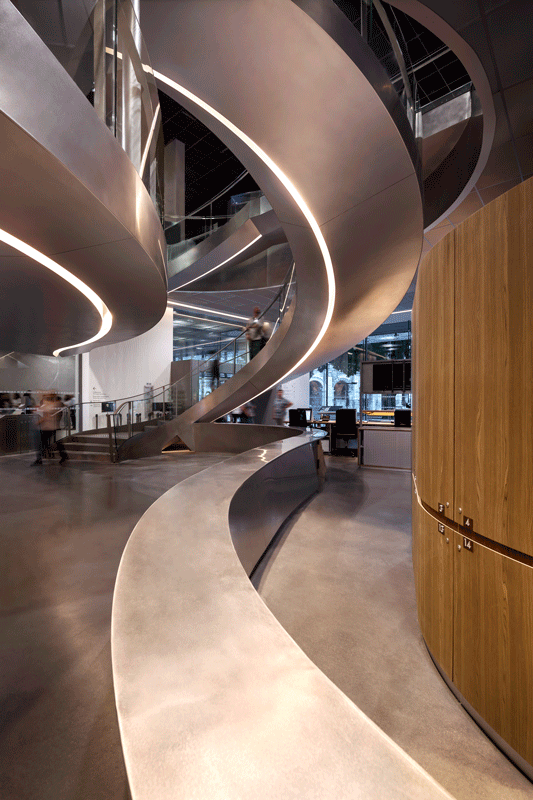
The Creation of an Architectural Dialogue
The Musée de la Romanité functions as much more than a simple exhibition space. It is imagined as a gateway to a deeper understanding of the city and its history. In a broader sense, it provides an exceptional view for grasping the footprint of Roman civilization in the Mediterranean basin.

In this context requiring the establishment of a fair dialog between two buildings, Elizabeth de Portzamparc’s proposal translates into a relationship based on complementarity. Two geometries, two materials, two contours respond to each other, creating an architectural tension: facing the mass of stone and the magnificent design of the vertical arches that Rome bequeathed, the building radiates in a clear, luminous presence, a fluid and diaphanous contemporary architecture whose horizontal drapes seem to levitate on the site and on the archaeological garden.
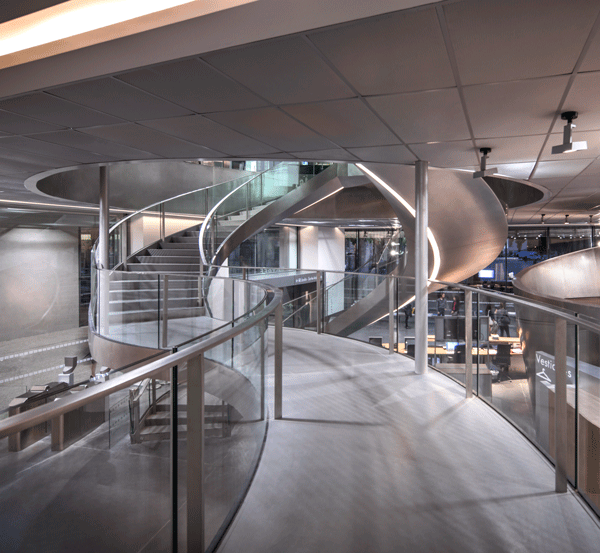
The decision to make a contemporary architectural gesture facing a monument, as with the Carré d’Art a few years ago, aligns the museum with the tradition of Nîmes. Today, the museum offers a new vision of the public square of the Amphitheater and its curving façade. Its lightness facing the classical massiveness sets up a powerful architectural dialog between these two buildings separated by 2,000 years of history.
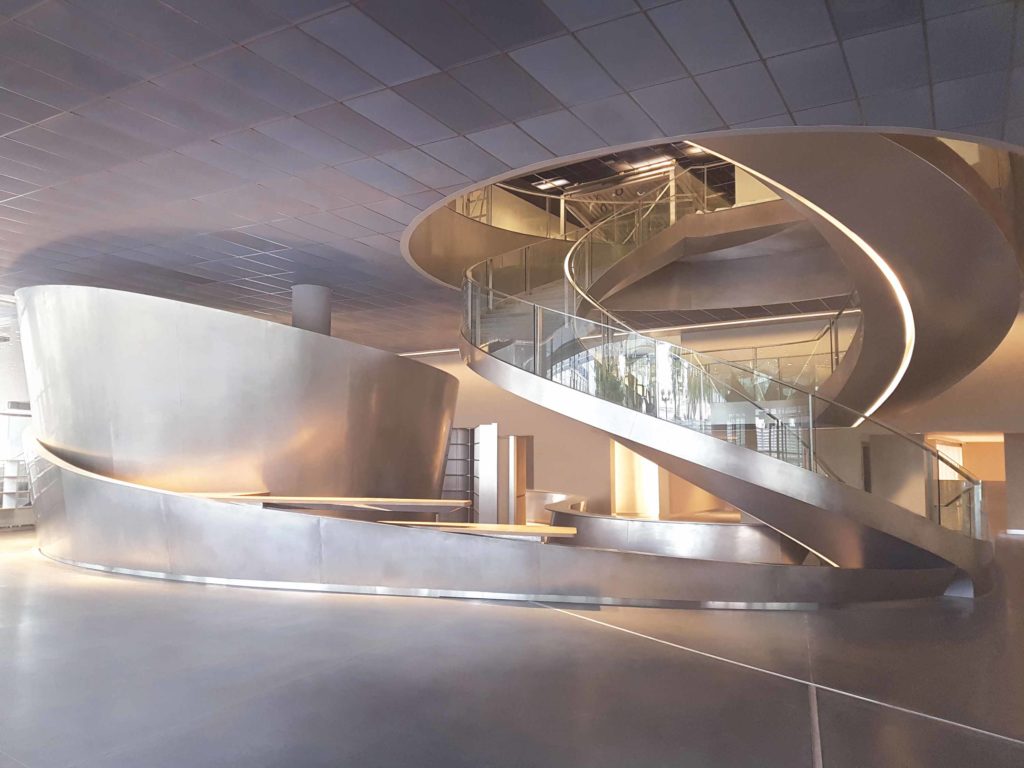
The Facades: A Showcase for the Museum’s Collections
The façades are the building’s final punctuation mark, with the dual function of conferring identity and practicality. They are the calling cards for the buildings and thus reflect their values. Situated at the entrance to the ancient city, the museum opens the view to the Amphitheater from
the Rue de la République through its transparent ground floor: it announces the spectacle, attracts and surprises. The supple drapery of the façade evokes a Roman toga and the square glass plates composing it
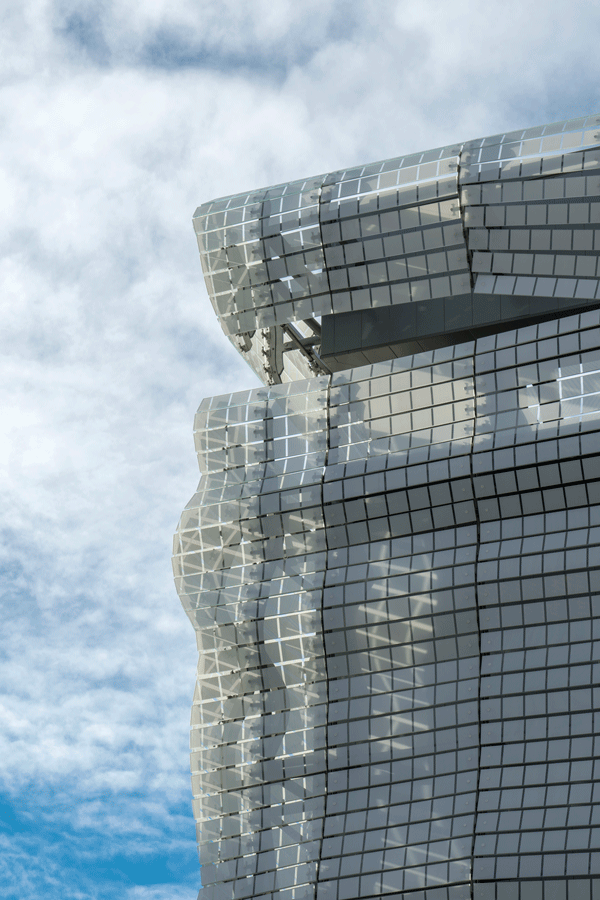
This translucent glass skin is composed of 7,000 screen-printed glass plates covering a surface of 2,500 m2. The reflections and undulations of this glass mosaic change appearance over the course of the day. A work within a work, it creates kinetic reflections, variations of subtle reflections depending on the angles, inclines, troughs and ridges, which accentuate the perception of movement through constant metamorphosis as the day goes by and the seasons change, creating a dialog with the city by reflecting its colors, light and the surrounding life.


The Terrace Roof
The green terrace roof wasn’t planned in the competition program. It was created by Elizabeth de Portzamparc as a culminating point of the museum upward trail. It punctuates the visit by offering a belvedere over Nîmes and its 21 centuries of History, with the Amphitheater in the foreground and, in the distance, the Magne Tower, dating from the city’s founding. This public space, a meeting place accessible to all and city square up above, brings urban life up to the very top of the museum.
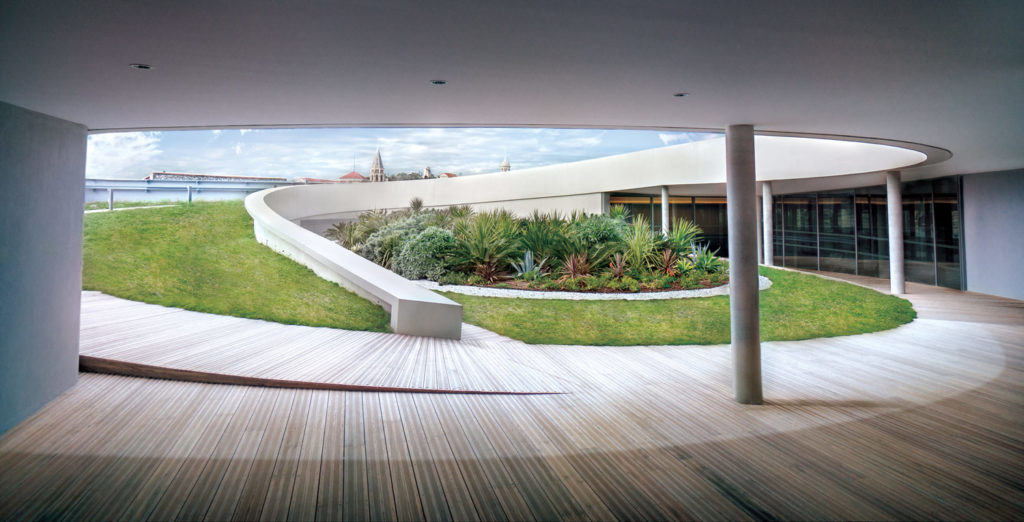
Organized around the Roman wall and other vestiges, the archeological garden is imagined as a “green museum”. All traces of History discovered here have been restored and are now freely accessible to all visitors and strollers. This 3,500 m2 vegetated public space imagined by Régis Guignard is structured in three layers corresponding to the great periods – Gallic, Roman and medieval – of the museum itinerary, thus enriching and completing the subject, in coherence with the scientific content. Entirely open, the garden is an integral part of the surrounding urban fabric: the accesses linking the rue Ducros to the rue de la République make it possible to cross it like a public space. It thus constitutes a place of passage and meetings, creating a new place of urban conviviality.
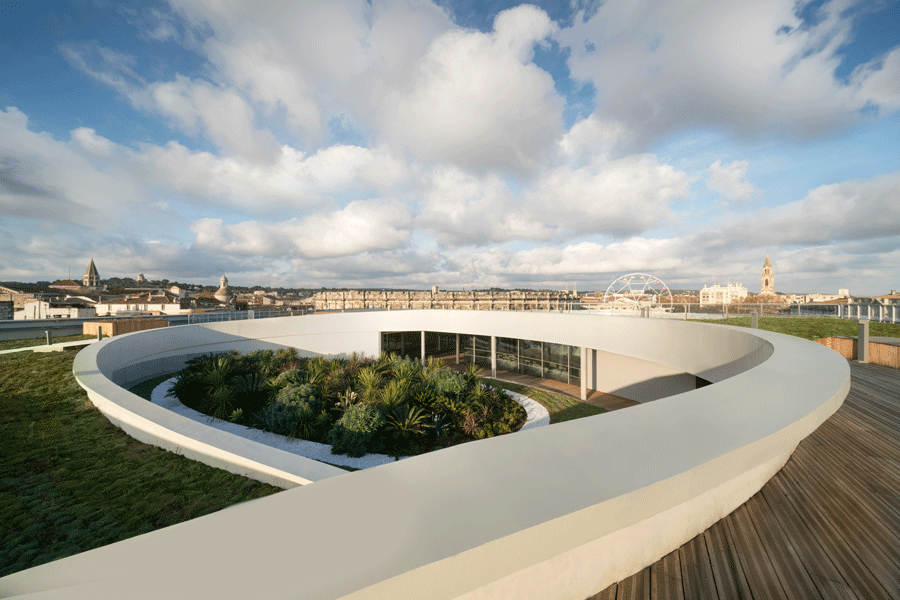
A Museography in Great Consistency
In keeping with the global architectural choice, the spatial distribution of the exhibition rooms is organized around the recreation of the
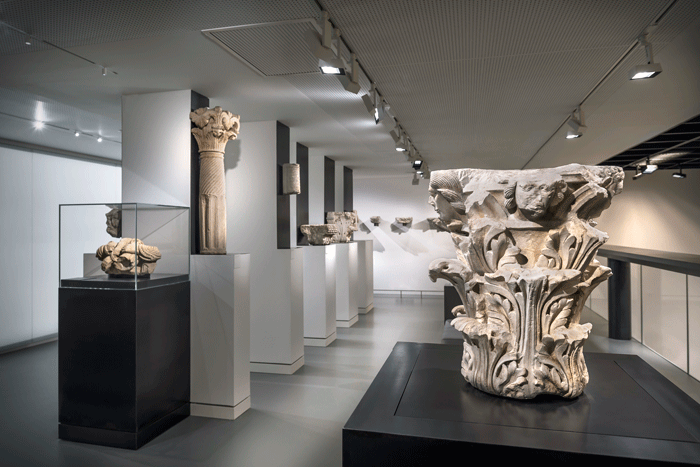
The interior design completes and supports the building’s architecture. All the way through the upward trail, the museography is open, in a search for the desacralization of museums and culture. The pathways are like urban interior promenades, squares, streets (circulation spaces), built elements (volumes, exhibition furniture, semi-open spaces, etc.) that bring urban space to the top of the museum. This museography extends the city inside the museum and highlights the idea of
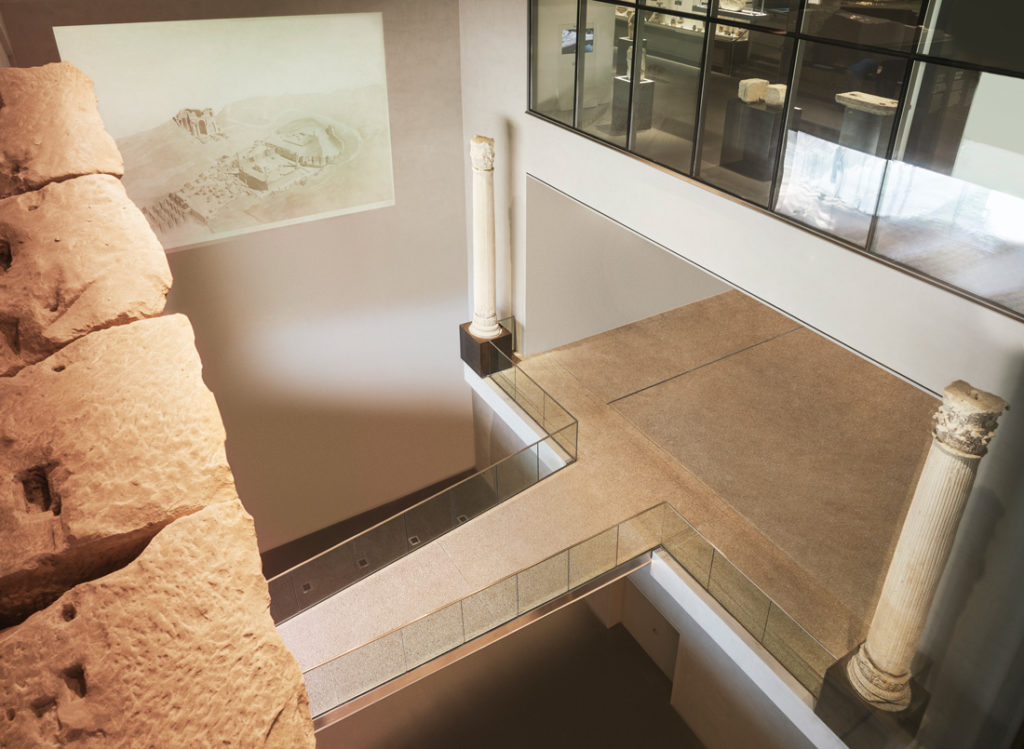
Innovating Technologies
The introduction of highest technology multimedia in the museum trail has been carefully balanced. Some subtle reconstitutions and multimedia devices punctuate the trail and help
Multimedia devices such as virtual tours, graphic animations and maps allow a better understanding of the context of the collections. The devices of augmented reality, 180° interactive panoramas and an interactive wall of images are made to propel visitors into the lives of men of Antiquity, to understand the evolution of their know-how and the masterpieces they produced.

Project Management
Mandatory – Architecture and museography
ELIZABETH DE PORTZAMPARC
Associate architectes A + ARCHITECTURE
Associate architectes (ACMH) ALAIN-CHARLES PERROT
Landscaping SARL MÉRISTÈME
Multimedia MARDI 8
Signage
LOCOMOTION SARL
JE FORMULE
BET Lighting LIGHTEC
BET Acoustic GAMBA ACOUSTIQUE
Environmental quality
CELSIUS ENVIRONNEMENT
BET Construction economy L’ECHO
BET Structure SARL ANDRÉ VERDIER
BET Façade RFR
BET Fluids LOUIS CHOULET
OPC ARTEBA
BET Synthesis C&G
Security and accessibility CSD FACES
Main Construction Firms
Earthwork, Structural works, Framework, Roads
Façade – glass mosaic: HEFI
Sealing: SMAC
Scenographic lighting and museography: INEO
Multimedia: INEO
Heating, ventilation and cooling, plumbing
Façade coating: PAREX
Audio and multimedia devices for the museography:
Locksmithing: CONSTRUCTION ST ELOI
Layout – Museography planning: PISTRE /
AE3 / CUARTERO / O’PURE / HORTIZ




